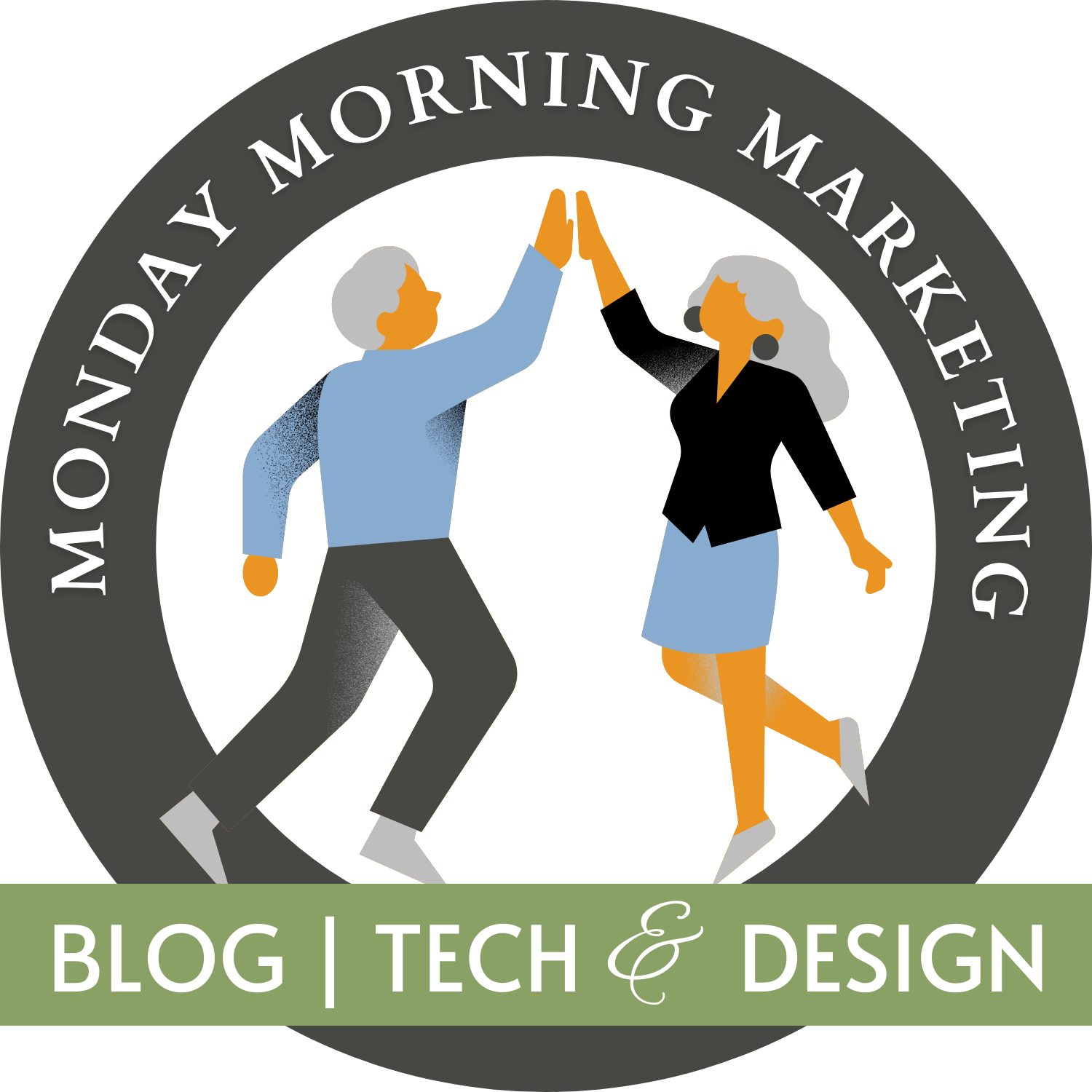
Nov 2, 2024 | AI (Artificial Intelligence), digital marketing, Marketing, marketing for professional practices, Relationship Marketing, Small Business Marketing Strategy, Web Design
Using Chat-Bots to Market Your Small Business or Practice
Have you ever gone to a website to find support and you encounter a little box that pops up usually on the right side, asking if it can help you?
You really wanted to speak to a person or at least submit a support ticket? But you don’t readily see a phone number or a way to fill out a support ticket. So you decide to speak to the little box.
It says, “Hi, I’m ___________. How can I help you today? You find yourself trying to explain politely to the box what you are looking for. Sometimes the little box understands you right away; sometimes it asks you for more information. You try again to politely explain what you need. Now the little box comes back with, “I still don’t understand you. Can you explain more clearly?” Now you’re getting annoyed and are a little less polite. You think, “maybe the little box doesn’t understand being mannerly, so I’ll be more straightforward and use less socially gracious words.” So now, you just speak simply, precisely and clearly. Now you think you will make some progress, but the little box comes back with links to articles that it thinks will help you. So you give up. You just want to speak to a person!!!
But, the little box passes your message on to real support person and lets you know that one of the support team will get back to you. And someone usually does but often it’s not until the next day depending on where they are located.
Pros of Chat-Bots
I’m sure you’ve experienced this scenario so you know what I’m talking about. There are some positive uses for chat-bots, especially when combined with the option to choose how you want to communicate with a business.
Chat-bots are great for quick answers to simple questions.
- They can save time and offer relevant suggestions.
- They are multi-linqual
- Can be accessed over all communication channels; phone, email, messaging apps, and social media.
- They are available 24-7.
- The business owner that opts for a chat-bot on their website has the opportunity identify potential new customers who interact with the chat-bot when you aren’t available.
There are limitations as I pointed out in my opening paragraphs; but chat-bots can be useful to small businesses who don’t have time or office staff to always be available to take a call. Chat-bots help you recognize that someone “out there” has a need for your services which then provides the opportunity for you to follow up on that lead.
When I design websites, I always ask the clients if they would like this form of communication added to their custom website. But, in addition to adding a chat-bot, my recommendations are to make all forms of communication available and easily visible. Adding the chat-bot, the phone number (hyperlinked to make it easy to dial), and a hyperlinked email address (making it easy to email you right on the spot) all in one spot next to each other makes it convenient for the customer to contact you with the method of their choice.
Just this simple addition makes your website user friendly and ready for customers to contact you.

Sep 9, 2024 | Blog, Marketing, Small Business Marketing Strategy, Web Design
Businesses first started using the internet for commercial transactions in 1994/95. Today, most of us can’t even imagine what doing business would be like without the internet. I can remember what life was like before the internet, and I also know that my business wouldn’t have become a reality if it weren’t for the internet. So I am grateful for the internet and all the opportunities it has provided.
Considering businesses use the internet for their:
- Websites and website security
- Marketing
- Search engine optimization
- Accounting and accounting security
- Brand awareness
- Social media and their Reputation
- e-commerce and e-commerce security
- Customer support
- Cloud access
- Productivity
- Cost savings
- Presentations
- Content marketing
What could possibly go wrong?
Imagine waking up in the morning, looking at your website and finding it gone or offline! Worse yet, finding it hacked and held for ransom until you pay the ransom fee. (That’s probably the worst case scenario.) By having an IT consultant on your team you’ll know exactly 1) who to call and 2) you won’t have to explain the problem to a number of different technicians who aren’t familiar with your website.
The Value of an Online Marketing Team to the Small Business Owner
The most important marketing asset a small business can have is their website and all else flows from there. But often, small businesses are on a limited budget and will sometimes skimp on the website because they feel there so many “more important things” on which they need to spend money. I get it. Running a small business is tough and expenses are high and appear out of nowhere.
But someone once said to me, “the professionals I can’t do without are my attorney, my accountant and my web designer.” I would go one step further and include an IT consultant. Professional web designers and IT providers are crucial for a small business because along with the business owners’ expertise, they provide the necessary skills to help the small business owner market their business successfully.
Together the web designer and the IT consultant create an invaluable online marketing team. The professional web designer creates a beautiful, functional, and mobile responsive website; the IT consultant manages your website behind the scenes by hosting, securing and protecting your website. These two professionals go together like bread and butter, cookies and milk, hot dogs and beer…you get the picture.
The Web Designer.
A professional website designer not only designs your website according to modern trends and standards, but is able to add in the components needed to perform uniquely for your business. An attractive website is great, but, it also needs to function according to how you, the business owner, wants it to function. Here’s what you want to look for in a well-designed website:
- An appealing custom design
- Mobile responsiveness
- No broken links
- An SSL certificate installed for the visitor’s security
- Compelling website content that can be repurposed for social media and email marketing
- Good visuals
- Social media integration
- Quick to load
- Secure from hackers
- A smooth user experience – easy navigation – good content
- Call to Actions
- Accessibility to conform to basic ADA standards
- Cookie notices to let your visitors know your website is collecting information about their visit to give them a more personal and convenient website visit.
- Secure contact forms
- Quality but condensed text
- Well-designed home page
- Low bounce rate (How quickly visitors leave your website)
- A gateway to allow payments online (if that is something the business owner wants)
The IT Consultant
A web designer who works with an IT consultant is invaluable to you, the small business owner. Without IT, the website not only couldn’t be published, but it would be open to all kinds of problems. The IT consultant keeps your website running and safe from technology failure, hackers and malware by providing the following:
- Technical support
- Update software
- License renewal and ensuring compliance
- Regulatory compliance
- Assess potential threats
- Hardware repairs
- Install and configure hardware and software
- Hardware and software procurement
- Maintaining hardware and software
- Cybersecurity
- Data storage and backups
- IT Security
- Installs and interprets website analytics
The Bottom Line
If you want to find customers, you have to market your business and an online marketing team, working together with you and for you, will provide everything you need to successfully market your small business.
Together, these two professionals working as a team for you is immeasurable. One team. One phone call. Multiple services.
May 14, 2024 | Social media marketing, Web Design
The Effectiveness of Social Media for Generating Customers
This week, I researched statistics of the effectiveness of social media. I tried hard to find statistics that show the social media is a waste of time. But, to my surprise, I was unable to find any that supported my claim that social media is like a black hole that gets us no where.
I guess the real question to ask yourself is who are you marketing to? Each generation responds to marketing efforts differently. Therefore, we might serve you better if we take each generation, what you provide and best marketing channel for your target market and focus on a different segment each week.
Type of Products or Services you Provide
Nearly 20% of Americans 65 and older are employed. In total, there are around 11 million Americans 65 or older who are still working today. This is important information if you are a company that provides business to business (B2B) products or services. If you provide products or services to consumers (B2C), this statistic is less important to you.
Marketing to Baby Boomers (1945-1965)
Boomers are very loyal to brands. Once they like a brand, it will take alot for them to switch. They appreciate up-sells such as an offer to get an extra 100 GB of storage for an extra $10 month. They love the rewards programs that give them a free gift once they spend enough to build up their rewards. In general, boomers aren’t impressed with discounts. They feel they earned the right to splurge once they retire.
Marketing channels
Traditional marketing channels such as newspaper, TV or radio works for this generation whether they are still working or not. Again, it depends on what you provide as a business.
Facebook is a good social media choice for those who sell to consumers especially when you use targeted ads. However, for B2B marketers, LinkedIn would be the better social media platform if you want to reach baby boomers who are buyers or run their own business or practice.
Baby boomers are watching video based apps and the time they spend on their phones has increased in ten years from 37 minutes in 2013 to 2 and a half hours in 2023. Learn more about this research.
Summary of Successful Marketing to Baby Boomers
- Appeal to the brand loyalty
- Offer up-sells and Rewards programs
- Traditional marketing like newspaper, radio or TV
- Facebook for B2C businesses
- Linked in for B2B businesses
- Video based apps
Apr 15, 2024 | Web Design
| |
Are you wondering what all this talk about websites has to do with marketing? Online marketing begins with your website so the importance of having a well designed and functional website is crucial. Coming up we’ll discuss the topics of content marketing (June), social media marketing (July) and AI (August).
Features. Don’t choose a theme with a lot of fancy features unless you need them. They can slow down your site.
Responsiveness. Do choose a responsive theme. This means that your website will visually adjust itself to all types of devices. This is especially important for mobile phones since more and more people are viewing websites from their phones.
Color. Keep color in mind when choosing your theme. Color is hugely important because it reflects the mood you want to set for your website. Also some colors don’t translate well to websites so it’s important to use a color that is approved for websites. I have so much to say about color because the importance of color can’t be understated. Coming up in May, I will discuss the psychology and nuances of color when designing a website while Charles will be discuss the technical features you need for a well functioning website.
Premium themes. Consider buying a premium theme. The free themes will provide a space to design but have very minimal flexibility. Free themes might not be updated as regularly and there is no support included with a free theme.
Fonts. Don’t choose a theme with a font that’s hard to read. Make your fonts simple, sophisticated, and readable using two different fonts for the heading and text.
|




